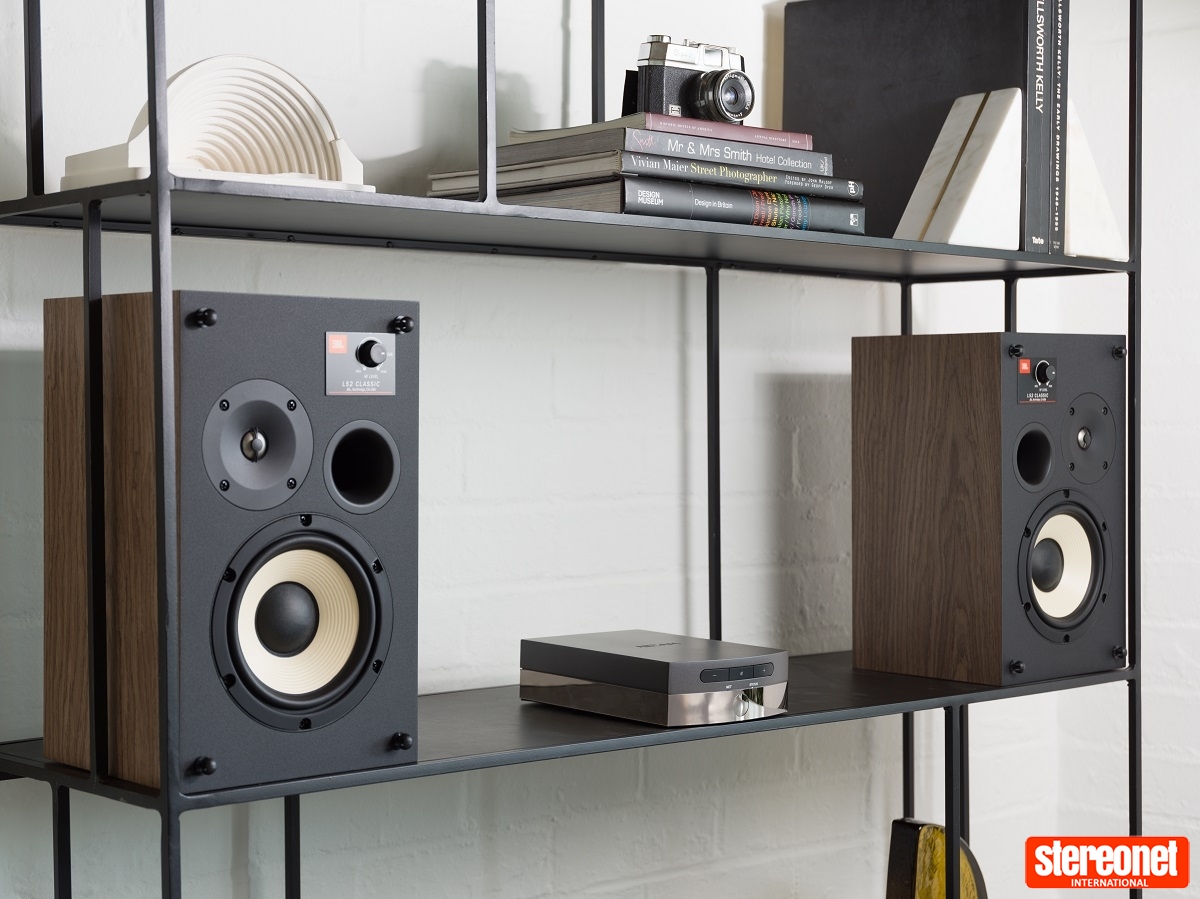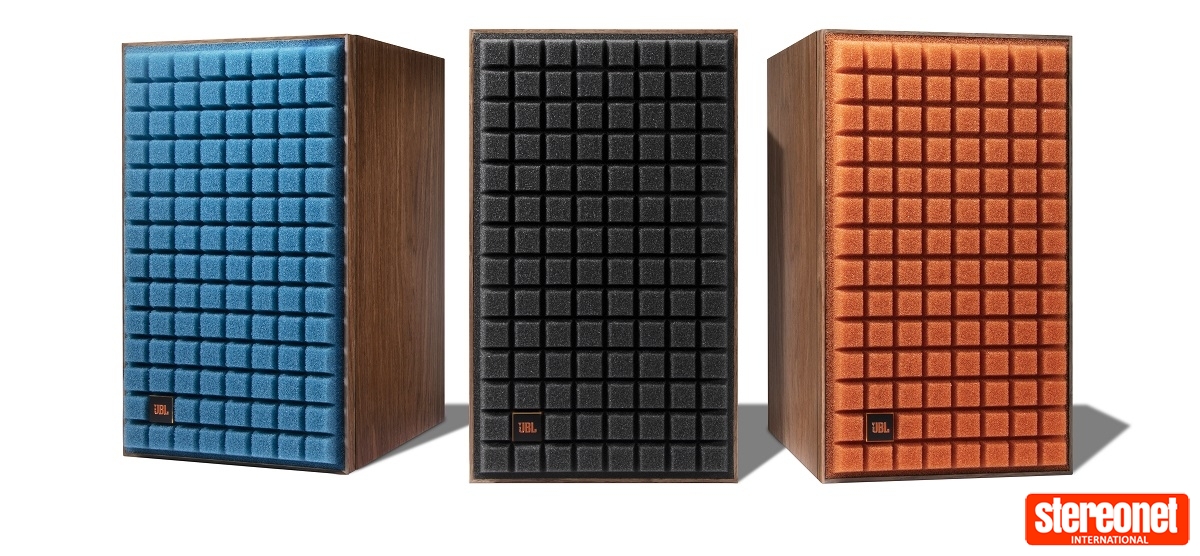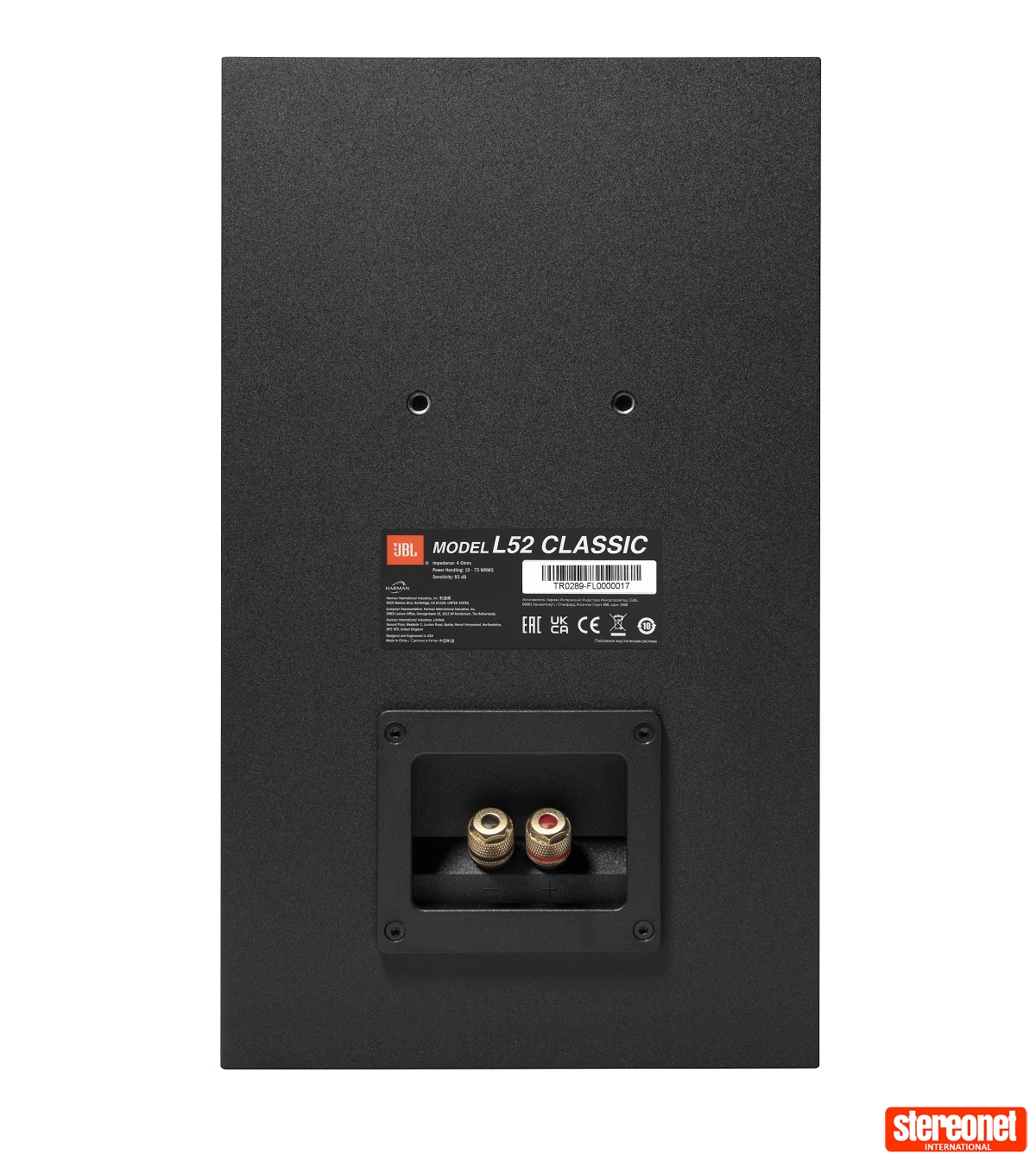JBL L52 Classic Bookshelf Speaker Review

Jay Garrett discovers that less is more with this cool looking retro standmount speaker…
JBL
L52 Classic Bookshelf Loudspeaker
AUD $1,899 RRP

JBL was established back in 1946, so is now one of the oldest hi-fi manufacturers around. As most will be aware, it has produced some legendary speakers for recording studios, concert venues, cinemas and, of course, the home. Not only does this demand respect, but it also means that the company has a brilliant back-catalogue of retro-styled greats to update for the current market.
The L52 Classic we have here looks like a miniaturised L100, which came out in 1970 and is arguably the most iconic JBL loudspeaker, helped by being sold by the truckload and appearing in that Maxell ad. However, this is actually a scaled-down model of the L82 Classic 2-way bookshelf speaker, enabling those with less space, or who are putting together a compact system, achieve a similar aesthetic whilst not having to compromise too much on sound.
Measuring 330x197x216mm (HxWxD), it sports a 20mm titanium dome tweeter paired with an acoustic lens waveguide and a 133mm white coned, cast-frame woofer. The result is a claimed sensitivity of 85dB/2.83Vm and 47Hz–24kHz (-6 dB) frequency response; the former is surprisingly low by modern JBL standards.
The Classic's overall build is good. More utilitarian than luxurious, it is fully in keeping with its nineteen seventies aesthetic. The front and rear baffles are painted black, with the other panels finished in a satin furniture-grade walnut veneer. The veneer is neatly applied, and the cabinet itself feels solid, albeit lighter than expected, tipping the scales at 5kg apiece.

Grilles are generally never much of a consideration and more often than not stay in the box, but with this design it matters. Just as the L100 was known for its distinctive orange foam grille, this younger and smaller sibling has been treated to the same Quadrex foam adornment. I am pleased to report that a burnt orange set was provided with my review pair; black and dark blue are your other options. Taste is personal, but I think the orange grille looks strikingly cool. Although, I would understand if the black option becomes its bigger seller. Of course, back in the day, many people took the grilles off because they were never truly acoustically transparent.
While it is easy to award cool points for the L52 Classic's retro design, the business end is where we should be focusing. Firstly, that white woofer is styled to look like the 30cm unit in the L100 but is, of course, a modern design built with a cast chassis and ribbed paper pulp cone mated with a front-firing bass reflex port. This hands over to the titanium dome tweeter at 2.8kHz. The tweeter benefits from a shallow, dished waveguide plus an acoustic lens to control dispersion.
Alongside the tweeter is a dial to trim the high-frequency output, which I kept set at its default 0dB position for most of the testing. However, I can see uses when the speakers are positioned less than optimally or if you want to sprinkle more highs on a particular recording or tone down any overly bright offering.
The L52 Classic isn't particularly easy to drive; alongside the aforementioned so-so sensitivity figure, it has a 4 ohm nominal impedance, which means you'll need an amplifier with serious load driving ability. My Gryphon Essence stereo power amp dishes out 190W per side of Class A loveliness into 4 ohm loads, so although it's a bit overkill for this dinky bookshelf design, it sounded great. A more price-matched pairing saw Naim's NAIT X3 and Musical Fidelity M6si work well. Even Naim's Uniti Atom at 40WPC produced a pleasing sound, although it did need a tad more volume.

The little L52 is surprisingly transparent and, while not appearing to be overly fussy as to the front end being used, I could easily discern the difference in playback when using my primary reference system featuring MOON 280D streaming DAC and Gryphon amplification compared with the NAIT X3 and Chord Electronics Hugo 2/ 2go, for instance. That said, neither disappointed.
Although being a front-ported design allows you to position the JBL with its back against a rear wall, you will be rewarded by having it at least half a metre from the side walls. During testing, my review pair had plenty of space around them and were stood on SolidSteel stands just under 2.5 metres apart, slightly toed in towards my listening position with the tweeters on the outside edge of the mirrored pair. I found this was best in my room for separation, staging and immersion.
THE LISTENING
The L52 Classic is a little bundle of joy, one that supplies a considerable dollop of fun beyond its diminutive dimensions. While it may be more chilled about how it goes about things compared to Focal's Aria 906, for instance, it still manages to be detailed and insightful in all the right places – as the rendition of Gershwin's Rhapsody in Blue performed by the London Symphony Orchestra with André Previn at the helm proved. Here my review pair presented an engaging demonstration and delivered a hugely entertaining performance of a piece known for wide-ranging dynamics, with convincing authority given the design's size.

While bass was impactful and agile, there's only so much that physics will allow a cabinet of this size to produce; larger boxes such as my Marten Duke 2 reference standmounts deliver much more excitement and depth. Impressively though, I never felt like I was missing out on that much, thanks to the quality and musicality of the low end. While I was never at risk of having the foam blown off my cappuccino, let alone recreating the Maxell advert, there were moments where bass notes were punched out during tracks such as Billie Eilish's You Should See Me in a Crown or the kick drum in Devil's Bane by Tori Amos that elicited an approving smile from yours truly, and seemed to plumb lower than their quoted frequency response.
That low end punch and musicality is matched by a midband that does a great job of keeping everything in order. Whilst not as analytical as the Aria 906, the JBL still reveals plenty of information from the track played. For instance, spinning the 1987 original The $5.98 EP: Garage Days Re-Revisited by Metallica, back-to-back with the 2018 remastered reissue on my VPI Prime/ Sumiko Songbird l/o turntable via YBA Genesis PH1 phono stage, there was a distinctly audible difference between releases.
Moving up the frequency range into the upper midband and treble, and Tori Amos's vocals in Metal Water Wood cut through cleanly. High ranged percussion and synth sounds still had air and space to shimmer, and add texture too. This track was also another example of the little JBL's ability to organise and present tracks in a way that some similarly-sized offerings can only dream of.

Stereo imaging is good, with the L52 Classic conjuring up a reasonably expansive soundstage for its size, while instrument location is precise enough to picture the artists within the soundscape. The impression of depth is better than I was initially expecting but falls short of the rest of this speaker's talents. That said, I would not class this as a deal-breaking situation by any meter.
Turning to Neil Young at Carnegie Hall, and the JBL performed wonderfully. Guitar and vocals were refined and realistic, and Young's vocal stylings still came through full of character even at low volumes, making this speaker perfect for late-night listening. The same went for more uptempo and raucous offerings such as Leftfield's Leftism.
THE VERDICT
 The JBL L52 Classic is so much more than the retro clothes it wears. Is it perfect? Perhaps not if you're seeking the last word in forensic detail, but I dare say that you'd also be looking at a larger budget for that. However, if you asked me to recommend a set of sub-$2K compact yet capable bookshelf loudspeakers that manage to combine fun with an impressive level of information retrieval, then these would undoubtedly be in the mix. Of course, you cannot ignore the retro charm, but I understand that this is not to everyone's taste. So, if you are looking for something with a more modern vibe, then Acoustic Energy's AE500 is a worthy contender, albeit with a totally different personality. But, I will admit that the dinky JBL has charmed me.
The JBL L52 Classic is so much more than the retro clothes it wears. Is it perfect? Perhaps not if you're seeking the last word in forensic detail, but I dare say that you'd also be looking at a larger budget for that. However, if you asked me to recommend a set of sub-$2K compact yet capable bookshelf loudspeakers that manage to combine fun with an impressive level of information retrieval, then these would undoubtedly be in the mix. Of course, you cannot ignore the retro charm, but I understand that this is not to everyone's taste. So, if you are looking for something with a more modern vibe, then Acoustic Energy's AE500 is a worthy contender, albeit with a totally different personality. But, I will admit that the dinky JBL has charmed me.
Visit JBL for more information
Jay Garrett
StereoNET’s resident rock star, bass player, and gadget junkie. His passion for gadgets and Hi-Fi is second only to being a touring musician.
Posted in:Hi-Fi Loudspeakers Bookshelf / Standmount Applause Awards 2021
Tags: jbl convoy
JOIN IN THE DISCUSSION
Want to share your opinion or get advice from other enthusiasts? Then head into the Message Forums where thousands of other enthusiasts are communicating on a daily basis.
CLICK HERE FOR FREE MEMBERSHIP
Trending
applause awards
Each time StereoNET reviews a product, it is considered for an Applause Award. Winning one marks it out as a design of great quality and distinction – a special product in its class, on the grounds of either performance, value for money, or usually both.
Applause Awards are personally issued by StereoNET’s global Editor-in-Chief, David Price – who has over three decades of experience reviewing hi-fi products at the highest level – after consulting with our senior editorial team. They are not automatically given with all reviews, nor can manufacturers purchase them.
The StereoNET editorial team includes some of the world’s most experienced and respected hi-fi journalists with a vast wealth of knowledge. Some have edited popular English language hi-fi magazines, and others have been senior contributors to famous audio journals stretching back to the late 1970s. And we also employ professional IT and home theatre specialists who work at the cutting edge of today’s technology.
We believe that no other online hi-fi and home cinema resource offers such expert knowledge, so when StereoNET gives an Applause Award, it is a trustworthy hallmark of quality. Receiving such an award is the prerequisite to becoming eligible for our annual Product of the Year awards, awarded only to the finest designs in their respective categories. Buyers of hi-fi, home cinema, and headphones can be sure that a StereoNET Applause Award winner is worthy of your most serious attention.




